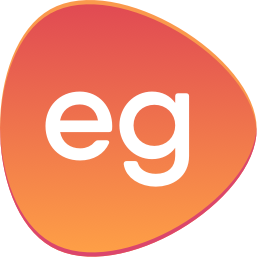The Basics On How To Create Good Learning Objectives
In easygenerator’s new web edition, it is impossible to create content without an associated learning objective. Easygenerator is the only e-Learning authoring software that works this way. However, we discovered a problem: If you create bad learning objectives – that aren’t measurable –you will get equally bad courses. To solve this problem, easygenerator is developing an eLearning course that will instruct you on how to create great learning objectives. Additionally, easygenerator will build a tool within easygenerator that will support authors to develop proper learning objectives.
Getting Started
Before you start to develop a course, you need to think about the following:
- Who are the learners completing this course?
- What do you want them to be able to do after completing the course?
- What do they need to know to do this, and
- What must the learner understand to be able to do it?
By answering these questions, you will be developing the course’s learning objectives.
Blooms taxonomy
Before you can define learning objectives you need to identify what levels of learning you want learners to achieve. The standard for this is Bloom’s taxonomy, which has 6 levels of learning.
The most basic level of learning is ‘Remembering’ and the highest level of learning is ‘Creating’. Here is a short description of each of the levels:
| Levels | Is the learner able to: |
|---|---|
| Remembering | recall or remember the information? |
| Understanding | explain the ideas or concepts? |
| Applying | use the information in a new way? |
| Analyzing | distinguish between the different parts? |
| Evaluating | justify a stand or decision? |
| Creating | create something new (ideas/products) based on the acquired knowledge of skills? |
Which level of learning do you need?
When reviewing the average eLearning courses, a large percentage will be at the Remembering or Understanding levels, which isn’t necessarily good. In most instances, a course needs a mix of levels dependent on what you want to achieve and the learner to learn.
Here’s an example:
Let’s say you have a team that works in a specific way based on some formal theory and you want to change that. For example, the team creates e-Learning courses using ADDIE and you want to change to an agile method like SAM. (See leaving ADDIE for SAM by Michael Allen).Though this is a complex problem, let’s try to simplify it. You decide you want to create a training course to explain to the team how ADDIE works. To achieve your goal, you probably need to go through these steps:
- Improve awareness and motivation of the learner
- Provide new information to the learner to gain new knowledge, and
- Show the learner how to apply that knowledge
Awareness and motivation
Before an individual is willing to learn something new, you have to motivate them. In this case, analyzing and evaluating the shortcomings of ADDIE would be a nice angle. This means the learning objectives will be on several levels. Analyzing -- the process to identify where improvements can be made -- and Evaluating – outlining why it does or doesn’t support what you need to do, and Understanding – so the learner can explain the value of changing to a new process.
New information, New knowledge
Providing learners with insight into current behaviors and why they need to change, or how a new process can help make doing something better, helps prepare learners for change. When individuals understand why they need to change, you can begin to teach them something new. In this case, you’ll be explaining the foundation of the new approach to help them understand how it works and why it works. This means learning objectives will include Understanding and Remembering levels.
How to apply knowledge
In this example, the goal is to use a new methodology in the workplace, so the final stage will be Applying. Learners need to be able to apply what they learn in their day-to-day work. To reach this goal, the course will include a lot of practical training around issues and examples in case studies, in order to achieve this. This means learning objectives will include the levels of Understanding, Remembering and Applying.
Thinking about your course as a flow of objectives based on Bloom’s levels of learning is a crucial part of the design process. The end result will be very different than a PowerPoint like course on SAM trying to explain why it’s a better process and approach than ADDIE.The goal of this post was to help you create better learning objectives. We have learned about Bloom’s levels of learning, so now I can offer you some tips and tricks in writing (Applying level) objectives.
Writing learning objectives
The most difficult part of writing learning objectives is determining the learning stages and choosing the right levels of learning. After that, it’s just putting it into words and there are many resources available to help with that.
According to Rober F. Mager (go to this site when you finish this post, good reading stuff), the ideal learning objective has 3 parts:
- A measurable verb
- The important condition(s) under which the performance is to occur and
- The criterion of acceptable performance.
Mager defines a learning objective as a “…..description of a performance you want learners to be able to exhibit before you consider them competent.” And it’s important to note that an objective is not about the process of learning. An objective describes the expected outcome(s) of learning. Let’s start with the verbs. Each of Bloom’s learning levels has a list of associated verbs. So after you have selected the proper level, you will pick the right verb or verbs (this list is not exhaustive).
| Remembering | Understanding | Applying | Analyzing | Evaluating | Creating |
|---|---|---|---|---|---|
| Arrange Define Describe Duplicate Identify Label List
Match Memorize Name Order Outline Recognize Relate Recall Repeat Reproduce Select State |
Classify Convert Defend Describe Discuss Distinguish Estimate
Explain Express Extend Generalized Give example(s) Identify Indicate Infer Locate Paraphrase Predict Recognize Report Restate Rewrite Review Select Summarize Translate |
Apply Change Choose Compute Demonstrate Discover Dramatize
Employ Illustrate Interpret Manipulate Modify Operate Practice Predict Prepare Produce Relate Schedule Show Sketch Solve Translate Use Write |
Analyze Appraise Breakdown Calculate Categorize Compare Contrast
Criticize Diagram Differentiate Discriminate Distinguish Examine Experiment Identify Illustrate Infer Model Outline Point out Question Relate Select Separate Subdivide Test |
Appraise Argue Assess Attach Choose Compare Compute
Conclude Contrast Defend Describe Discriminate Estimate Evaluate Explain Judge Justify Interpret Measure Relate Revise Predict Rate Score Select Summarize Support Value |
Arrange Assemble Categorize Collect Combine Comply Compose
Construct Create Design Develop Devise Explain Formulate Generate Organize Manage Plan Prepare Propose Rearrange Reconstruct Relate Reorganize Revise Rewrite Set up Summarize Synthesize Tell Write |
In the example given above, one of the first objectives is at the analyzing level: The participant is able to analyze ADDIE in a way so that he can identify the pros and cons of this method. I used the verb analyze, which is measurable; it can be tested with a specific assignment.
For example, each participant has to write a list of ten pros and cons of ADDIE. This can be checked and scored. Mager’s last two points -- conditions and criterion -- are somewhat optional for learning objectives. You don’t really have to write them down, but they are always important to consider. In my example about the ADDIE team, it can be an important condition to create distance between the day-to-day practice and the learning experience in order to analyze it properly. Or maybe you need to start creating awareness earlier by asking team members to make notes in the weeks leading up to the training with things they like to improve or don’t like in the current process.The criterion of acceptable performance is also always important. But again you don’t have to always put them in writing. In this example, you want the end result to be that the team works in an agile way instead of the old ADDIE way. There will be a number of criteria that will increase the chance of success, examples are:
- TimeYou can’t expect immediate changes after a single training.
- PilotsA way to test out the new method on a small scale.
- ToolsMaybe they need a different authoring tool or project management tool to achieve the goal.
I find the criterion extremely important since it makes you consider how to embed new behaviors into day-to-day practice. It is an effective way to connect learning to on-the-job work. I believe if you start using this approach, you’ll l see great improvements very fast. Let’s summarize what we’ve addressed about writing learning objectives:
- Design the course flow to include as many levels of Bloom’s taxonomy as needed to ensure the learner will meet the objectives
- Use the correct associated measurable verbs for each learning objective
- Consider the value of adding conditions and criteria.
Is this all?
No, this is the start. With this blog, I was able to cover the basics, hopefully giving you a solid foundational overview to help you take the first step. However, the truth is, being a teacher (online or offline) or an author of didactical content is a profession, so there is a lot more to take into account when you want to deliver a cool and effective learning course. Some examples are:
- What is appropriate for the level of the learner?
- How to be sure to connect to the learners’ goals (or a curriculum).
- Ensuring the course is realistic and can be completed.
- Creating an interesting and engaging course for learners.
- And more
Even still, there is more to cover – such as how to choose the best delivery and type of learning for the specific learning need, which includes the course design, presentation and much more. This will be addressed in a future blog.









